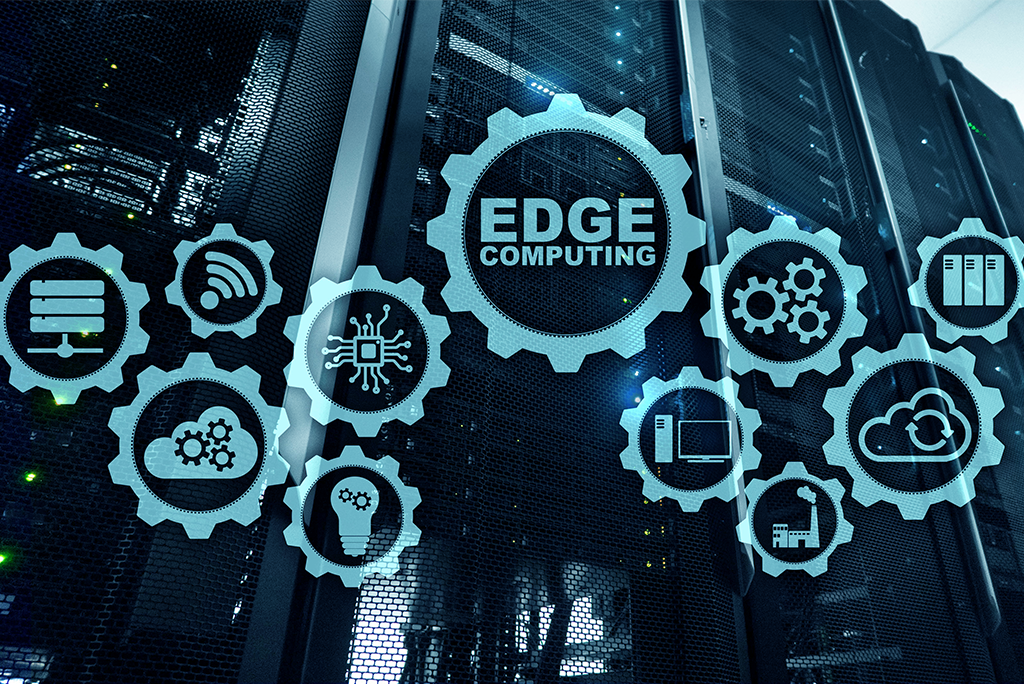
Edge computing is a decentralized alternative to cloud computing that uses a number of smart devices around the “edge” of a network to store data. With the rise of 5G and the Internet of Things (IoT), edge computing is expected to provide numerous benefits to organizations. Such benefits include shorter latencies, improved security, more affordable costs, and responsive data collection. According to a recent report from the research and consulting firm Frost & Sullivan, 90% of industrial enterprises will be using edge computing by 2022.
“To remain competitive in the post-cloud era, innovative companies are adopting edge computing due to its endless breakthrough capabilities that are not available at the core,” David Williams, managing principal at AHEAD, told the Enterprisers Project.“Such benefits include unparalleled local interactivity, reduced impact from service interruptions, improved privacy and security, and reduced latency.”
The Benefits of Edge Computing
Of all the benefits that edge computing can provide to organizations, lightning fast speed and reduced latency will be the most transformative. Moving large amounts of data across a network is time consuming. Edge computing brings computation closer to the user, making data transfer speeds much faster and less cumbersome.
“With edge computing, data is scrutinized and analysed at the site of production, with only relevant data being sent to the cloud for storage. This means much less data is being sent to the cloud, reducing bandwidth use, privacy and security breaches are more likely at the site of the device making ‘hacking’ a device much harder, and the speed of interaction with data increases dramatically,” writes Mark Seddon, CEO of Pact Global, in Information Age.
How will Edge Computing Transform Industries?
Edge computing is expected to pave the way for a number of technological revolutions, such as virtual and augmented reality for smartphone users, and smart cities with interconnected roadways and autonomous vehicles. Edge computing can also transform the industrial sector. Use cases include preventing equipment malfunction and reducing energy expenditure. Another potential application is “smart farming,” in which large sectors of agricultural production can be automated. This in turn could support farmers in boosting crop yields and reducing waste.
The film and gaming industries may be the first to be transformed by edge computing. Film producers must be able to transfer huge video files shot in high resolution. This process is often impossible to do over the internet. In fact, video files are so massive that most are still delivered by vehicle after shoots, rather than digitally. Slow speeds also make computer animation and rendering for film and games difficult.
To help solve this, Amazon Web Services is developing edge computing infrastructure in Los Angeles—a city home to numerous film and gaming companies. There, the tech giant has established the first of what it calls “AWS Local Zones,” an edge computing initiative that delivers low-latency access to Amazon Web Services, the company’s cloud computing platform, in “colocation centers,” rather than solely in Amazon’s vast cloud. These “local zones” provide distributed infrastructure that delivers edge computing and low-latency applications to clients. In each AWS Local Zone is an “AWS Outpost,” a rack that contains AWS cloud infrastructure. So far, Amazon has set up two Local Zones in Los Angeles, and aims to ease operations for the film and gaming industries.
Get Close to the Edge
Many organizations don’t fully understand edge computing and the impact it can have on their business. From providing real-time data analysis to reducing system malfunctions, edge computing can be customized to meet an organization’s specific needs.
Prepare your organization for edge computing integration. Designed to train your entire team to support edge computing, IEEE Introduction to Edge Computing is an online five-course program. To learn more about getting access to these courses for your organization, connect with an IEEE Content Specialist today.
Contact an IEEE Content Specialist to learn more about how this program can benefit your organization.
Interested in getting access for yourself? Visit the IEEE Learning Network (ILN) today!
Resources
Hughes, Matthew. (10 September 2020). What Is Edge Computing, and Why Does It Matter? How To Geek.
Miller, Rich. (4 September 2020). How AWS Cloud Customers Are Using Local Zones for Edge Computing. Data Center Frontier.
Seddon, Mark.(26 August 2020). How the edge and the cloud tackle latency, security and bandwidth issues. Information Age.


[…] work, these factories depend on networks capable of handling high volumes of data at minimal delay (latency). While such networks currently do not exist, new research suggests they are […]